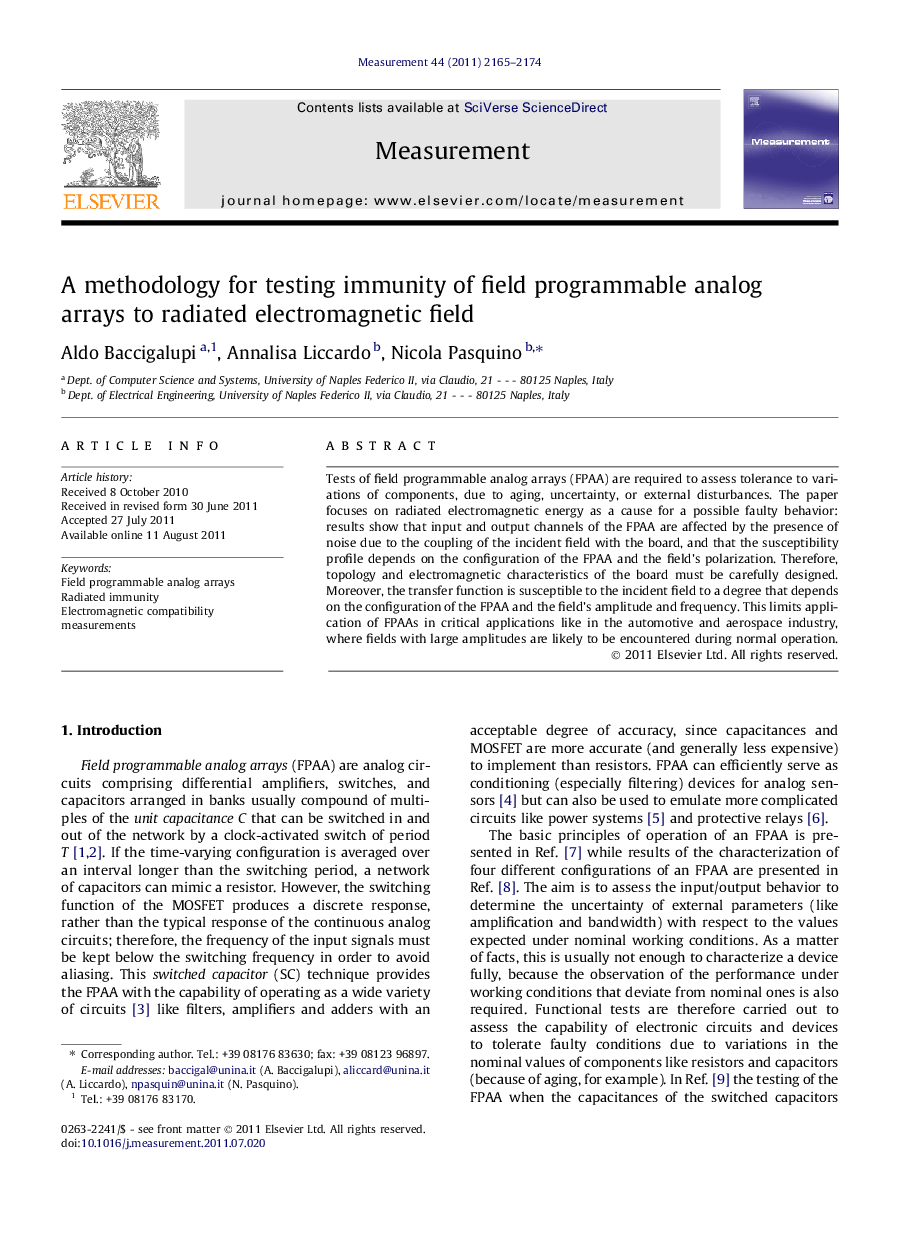| Article ID | Journal | Published Year | Pages | File Type |
|---|---|---|---|---|
| 730467 | Measurement | 2011 | 10 Pages |
Tests of field programmable analog arrays (FPAA) are required to assess tolerance to variations of components, due to aging, uncertainty, or external disturbances. The paper focuses on radiated electromagnetic energy as a cause for a possible faulty behavior: results show that input and output channels of the FPAA are affected by the presence of noise due to the coupling of the incident field with the board, and that the susceptibility profile depends on the configuration of the FPAA and the field’s polarization. Therefore, topology and electromagnetic characteristics of the board must be carefully designed. Moreover, the transfer function is susceptible to the incident field to a degree that depends on the configuration of the FPAA and the field’s amplitude and frequency. This limits application of FPAAs in critical applications like in the automotive and aerospace industry, where fields with large amplitudes are likely to be encountered during normal operation.
► An FPAA board offers a good coupling with radiated electromagnetic field between approximately 100 MHz and 1 GHz. ► FPAA’s gain changes by an amount larger that the evaluated uncertainty. ► Largest effects are observed when the incident field’s frequency is the same as the master clock’s. ► Non-harmonic frequencies can generate variations in the gain but they need larger amplitude fields than harmonic ones.
